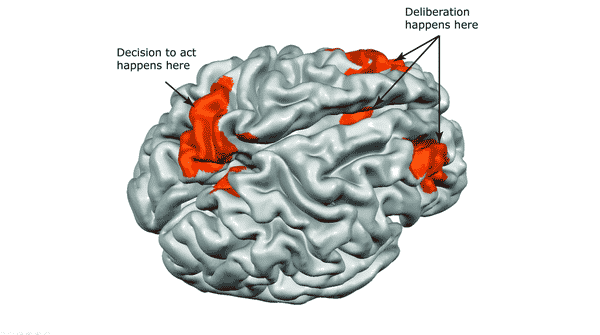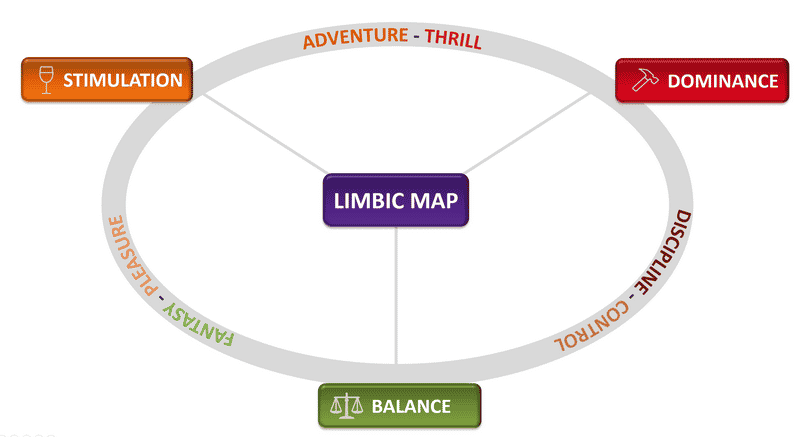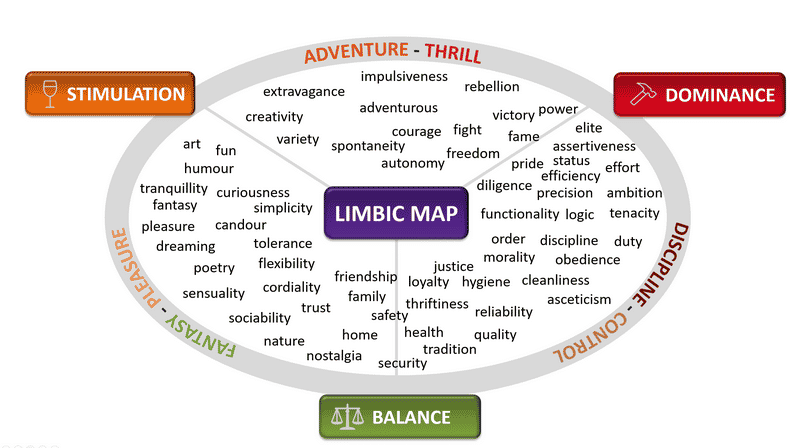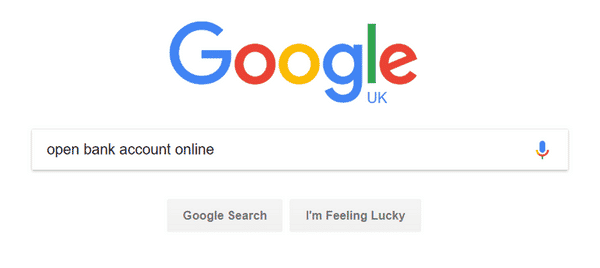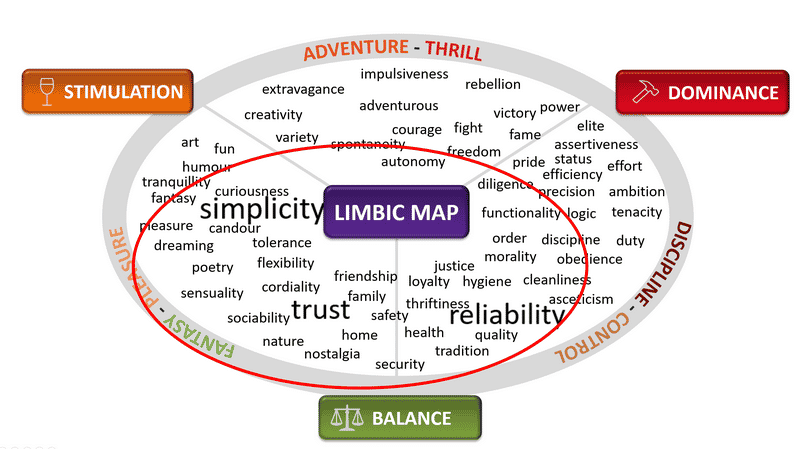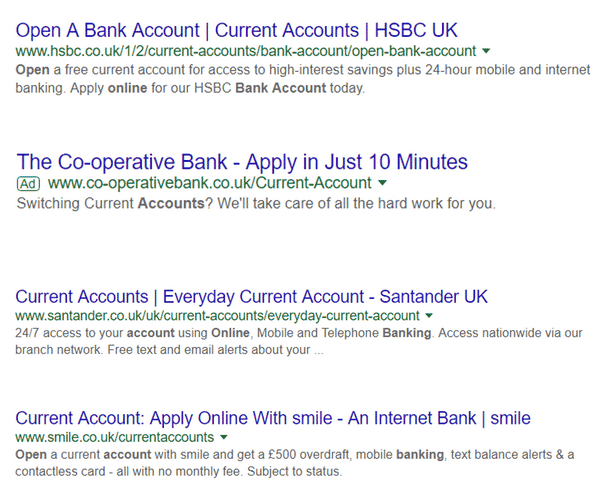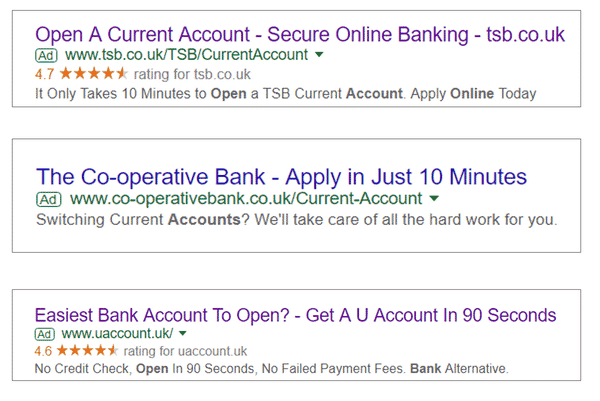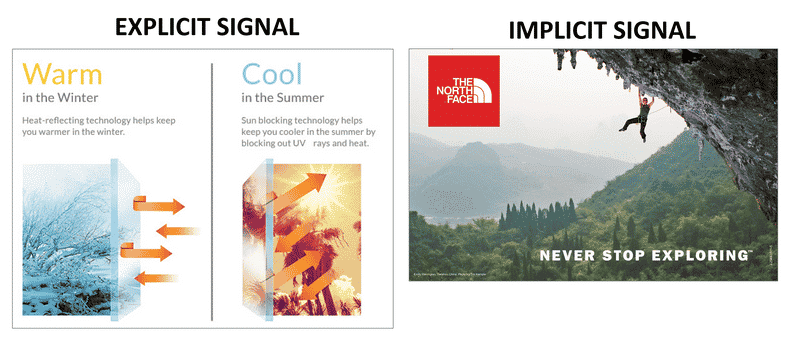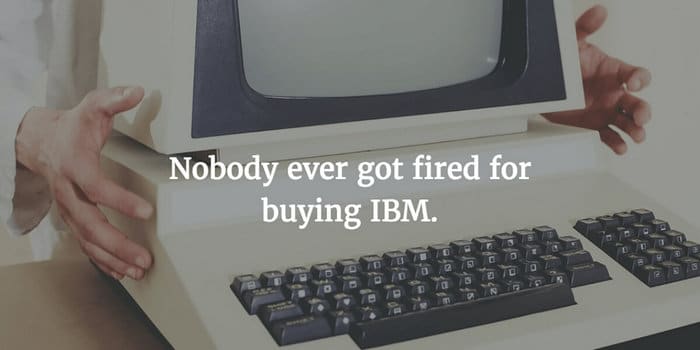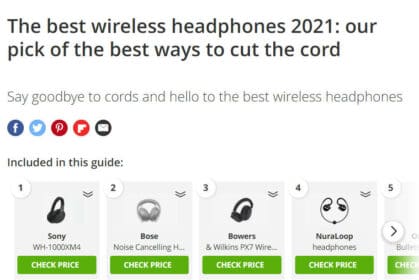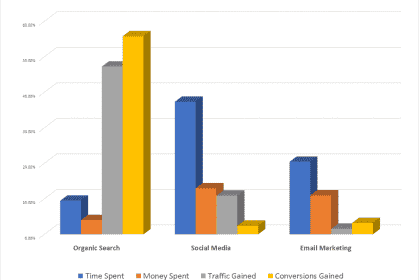
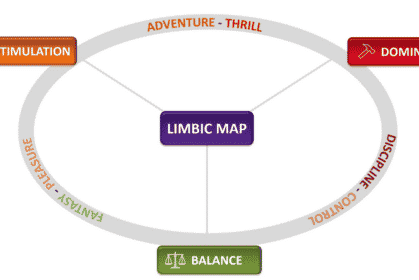
02/04/2018, SEO
How to use Emotional Goal Optimisation (EGO) to Increase Rankings, Clicks & Conversions

By reading this post you will understand what EGO is, see how it works and understand precisely how to apply it to your own business.
Why do we behave the way we do?
Let’s imagine for a moment that I wanted to understand what drives my clients to look for SEO training. I might send my clients a questionnaire asking the following simple question:
“What prompted you to look for SEO training?”
I might receive responses similar to these…
- “I need to get my website ranking higher on Google”
- “I find SEO confusing and need some expert help”
- “I am tired of seeing my competitors outrank me on Google”
The problem with conducting any survey or questionnaire is that your respondents can only give you logical, rational reasons for their decision. These may not be the true answers to why they looked for SEO training, but how they rationalised that decision to themselves, after the event. The truth is, most of our behaviour is driven by neither logic nor reason.
The Limbic System
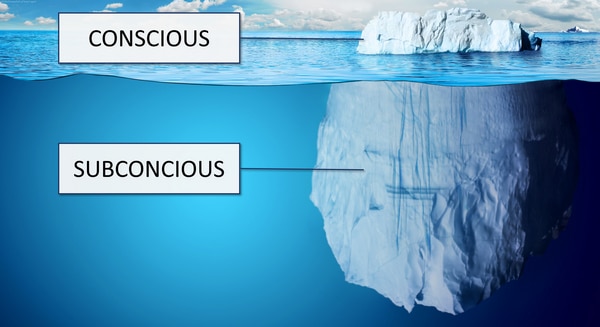
When asked to provide a reason why we have acted in a particular way, the answer we give is processed by our neocortex—the newest (neo) part of our brain responsible for all conscious thought.
Back in the 1940s – 1950s, surgeons would perform a lobotomy on patients to cure them of anxiety disorder. The operation involved severing the connection between their logical neocortex and the emotional limbic system. While this may have cured their anxiety, it also left the patient entirely passive and devoid of all motivation.
When asked to explain our behaviour, as much as we might wish to, we cannot answer the question truthfully because we have no conscious awareness of how or why our limbic system chose to act the way it did. The best we can do is to rationalise our reasons once the behaviour has occurred.
The Limbic Map
By placing subjects inside an fMRI scanner and exposing them to materials that stimulate an emotional response (videos, images, poetry etc.), neuroscientists are able to see which areas within the limbic system are activated when specific emotions are experienced.
They found that emotions such as ‘love’ was being activated in a similar area of the limbic system for all of subjects participating in the test. In other words, love, envy, rebelliousness and all of the other emotions we feel have their own ‘home’ within our brain.
Neuroscientists have produced a limbic map of the brain showing which areas of the limbic system are activated when specific emotions are being experienced.
As you can see from the image above, the limbic map is broadly divided into three key areas:
- Stimulation – An area dedicated to pleasure and enjoyment.
- Dominance – An area dedicated to control and discipline.
- Balance – An area dedicated to stability and security
Within each of these broad regions, there are thousands of more subtle emotions being activated in the limbic system. The image shown below is not a complete map of every emotion. Think of it like a map of the UK showing only the major cities and none of the smaller towns and villages.
How to apply the Limbic Map to online behaviour
I coined the term Emotional Goal Optimisation (EGO) to describe a method of using the limbic map to better understand why people perform an online search, click on a specific search result, engage with the websites they find and then take action on that website (e.g., buy a product or make an enquiry). Applying EGO to several clients’ sites resulted in increases in rankings, clicks and conversions.
Google Ads Experiments
Google Ads is an advertising platform which allows advertisers to choose specific search terms (keywords) that trigger their ads to appear in the search results. The position of the ad is determined by an auction system. The highest bidder will typically see their ad shown in the highest positions on Google.
I created a campaign using Google Ads to test the effectiveness of using emotional goals to persuade Google users to click on my ads. The idea was to create two variations of an advertisement: one with, and the other without emotional goals to see which ad received the most clicks.
To achieve this, I had to find keywords for which there was little or no competition (to minimise cost) but with a high volume of daily searches. That way I wouldn’t have to wait weeks or months to achieve statistically significant results.
Google Ads Experiment – “Apple Tart Recipe”
The keyword “apple tart recipe” receives approximately 8,000 Google searches per month in the UK and USA. As there is no-one else advertising on Google for this keyword, I was able to bid just 10p per click to achieve a top page ranking on Google.
I created my first advertisement by copying the exact wording of the No.1 organic listing on Google:
This copy is designed to appeal to the ease with which this recipe can be followed and that it is a “great recipe for beginners.” This copy acted as my ‘control’ against which other ads could be tested.
When I ran this ad on Google, it achieved a click through rate (CTR) of 9.16%. That means, for every 100 people who saw the ad, 9.16% of them clicked on it.

If I were to look for an apple tart recipe on Google, in addition to a recipe that was easy to follow, I would also want a recipe that would earn me the respect, love and admiration of my family and friends (I’m slightly embarrassed to admit this).
I then created the following variation of the ad which highlights “they will love you for this” and how the recipe will make you “feel proud hearing the compliments.”
After driving approximately 200 clicks to this ad, it achieved a click through rate of 14.6%, an improvement of 59% when compared to the original version that did not include emotional goals.
Google Ads Experiment – “Cheap Perfume”
To check that the results of my “apple tart” campaign could not be simply attributed to luck, I repeated my experiment using the keyword “cheap perfume.”
The keyword “cheap perfume” receives approximately 22,000 searches per month in the UK and USA. Once again, the competition for this keyword is very low so I was able to buy clicks for approximately 15p each.
I created another control ad based on the listing that appears in the No.1 organic position on Google (see below):
This copy plays on the great deals on offer and the fact that the customer can buy “designer perfume” at a low price.
When I ran this ad on Google, it achieved an astonishing click through rate (CTR) of 20.73%. This ad was going to be hard to beat!
I considered the emotional goals of someone looking for cheap perfume on Google. I decided they are unlikely to be much different from someone looking to buy any perfume, other than a greater concern for the price.

I therefore created the following variation of the ad highlighting the word “celebrity” and explaining how the perfume will make you “completely irresistible.” (To be honest, I wasn’t entirely happy with the wording of my ad and felt that, with a little more time, I could have created something much more appealing and, well.. seductive.)
Although uncertain that this ad would achieve better results than the control ad, it nevertheless achieved a click through rate of 25.1% after 200 clicks. This was an improvement of 21.08% compared to the original version that did not contain any emotional goals. I am confident that had I spent more time working on the copy, I could have achieved an even bigger uplift.
Google Ads Experiment – “Free PowerPoint Templates”
I was enjoying this game, and wanted to try one final experiment, this time using a much less sexy search query.
The keyword, “free PowerPoint templates” receives approximately 27,100 searches per month in the UK and USA. There is little competition for this keyword, so I was able to buy clicks for approximately 10p per click.
Once again, I created an advertisement based on the wording of the listing that appeared in the No.1 organic position on Google (see below):
This copy plays entirely on the wide range of templates on offer. When I ran this ad on Google, it achieved a click through rate (CTR) of 13.58%.

I therefore created the following ad variation and included the line “templates to inspire and impress your audience”
This ad achieved a Click through Rate of 16.76% after 200 clicks. An improvement of 23.4% when compared to the original version that did not include emotional goals.
Google Ads experiment conclusions
It seems that including emotional goals in the copy of your ads improves engagement even when the product or service is quite dull and your target market includes people that you might have assumed to be making logical, rational decisions.
I would love to try another experiment on a high-value, low volume keyword such as “accounting software”. Unfortunately, the cost would be far too prohibitive without the ability to generate real income from this campaign.
EGO for Landing Pages
Using emotional goals in the copy of your advertisements is only part of the story. When your website or landing page is designed to satisfy those same emotional goals, you are also likely to see a big improvement in online engagement and conversions.
In a recent study from SEMrush looking at factors that most closely correlate with higher organic rankings on Google, among the top items were:
- Time on site
- Average pages viewed per session
- Bounce rate
Although its precise algorithms are likely to be far more nuanced than this survey suggests, Google is increasingly moving towards user satisfaction signals to determine which pages should be shown in the highest positions in the search results.
Landing Page Experiment
Imagine you performed the following search on Google:
There are approximately 50,000 people in the UK every year performing this search. I imagine many of these people already have a bank account that was opened when they became a student or first started work. For whatever reason, they are now looking to change banks; presumably dissatisfied with their existing current account provider.
Now look at the image of the Limbic Map below and try to put yourself in the shoes of someone about to perform this search on Google. Which emotional goals do you feel would be driving your search?
When I think about how I might feel about the prospect of looking for a new current account, most of my emotional goals are clustered within the “Balance” section. Goals such as “trust” and “reliability” would be important drivers in my search for a new bank.
However, when I think about all the major high-street banks, I would find it hard to differentiate between HSBC, Barclays or Nat West when it comes to trust and reliability. They all feel equally trustworthy (or untrustworthy) to me.
I am, however, aware that the process of opening a new current account is likely to be a boring, time-consuming and complicated chore that involves filling out forms and having to prove my identity. Any bank that promised to make this process quick, easy and simple is likely to get the attention of my limbic system!
With that in mind, and assuming you were also looking for a bank account that was quick and easy to open, which of these listings would you click on?
The following three stood out for me as offering something that felt “quick” and “easy”:
Simply including these words in your Google listing is not sufficient. We also have to ensure that the visitor’s emotional goals are satisfied when they arrive on the landing page.
The limbic system also differs from the neocortex (rational part of the brain) in the amount of time it takes to process information. The neocortex is relatively slow as it attempts to make a logical interpretation of the information being received. The limbic system, on the other hand, processes information almost instantaneously.
When a visitor arrives on a landing page of your website, it will typically take them less than half a second to determine whether or not that page is emotionally relevant to their needs.
To see this for yourself, please watch the (30-second) video below showing a few of these banks’ landing pages for just 50 milliseconds each. After each clip, think about whether the landing page satisfied your need for a bank account that would be fast and simple to open.
Please note: The video contains an audio countdown to make you aware of when the image will be shown. Please mute your device if you are in an environment where audio should not be played.
When testing these landing page images at conferences and workshops, it was clear that almost none of the landing pages from any of the major high-street banks managed to convey a feeling of speed and simplicity. This includes the banks claiming their account is fast and simple to open in their Google listing and advertising copy.
Which landing page stood out for you as being “fast” and “simple”?
For me, the most interesting insight is just how quickly our brain is able to arrive at a conclusion. When you watched the video, did you even have enough time to read the words shown on the landing page? Our brain seems able to determine whether the account feels quick and easy to open without the need to read any information about the service on offer.
How does our brain form first impressions?

So far, we have discussed two different areas of the brain; the slow, logical neocortex and the fast, emotional limbic system.
If all sensory processing had to be performed by the slow, logical neocortex, our ancestors would have all been killed off by sabre-toothed tigers long before they ever had the chance to reproduce and become our ancestors. In fact, we owe our very existence to the ability of our ancestors not to think rationally before acting!
Even though the human neocortex is now significantly more developed than those of our ancestors, our brains are still highly adapted to make fast decisions without any conscious processing. Although we might feel we have control of our decisions, there is little evidence to support this argument. Our choices, behaviours and actions are determined by our subconscious mind and then sent to the neocortex for post-action processing.
First impressions of people

- 55% Body language (posture and facial expressions)
- 38% Tone of voice
- 7% Spoken words
(Source: Psychology Today)
First impressions of websites
When we land on a website, our first impressions are formed in a similar way:
- 55% Main image and colours
- 35% Large headings and layout
- 10% Words on the page
(Source: ConversionXL)
From my experience, when businesses make decisions about the design and content of their website their time is usually allocated in precisely the reverse order to those shown above.
They will labour for days over the precise wording on the page and spend little time considering which images or colours to use. They will often settle for a generic stock image that broadly represents the subject matter of the page. (Men wearing suits with hard hats and women wearing headsets are still a cliched and popular choice)
The limbic system is drawn to large images and simple headings that require little or no processing from the slower, logical neocortex. It is also highly sensitised to stimuli that correspond to our emotional goals. You might think of the limbic system as the “Donald Trump of the brain”.
Implicit & Explicit Signals
When we design landing pages to persuade visitors to buy our products and services, we can use both explicit and implicit signals. An explicit signal is one that provides a clear and stated benefit about our product or service. An implicit signal is an unstated message that creates a feeling of who the visitor will become once they have bought our product or service.
For example, an advert for a brand of single malt Scotch whiskey might include an explicit message about the age of the whiskey or the quality of spring water used in the distillation process. An implicit signal for the same product might include an image of a rugged Scotsman, relaxing by an open fire after a grouse shoot. The first image conveys a benefit of the product itself; the latter implies an image of the person you might become by consuming this product.
Here are some more examples of implicit and explicit advertising signals compared.
BMW 5 Series
North Face
Using implicit signals on your landing pages
Once you have determined the emotional goals that drive your online visitors to look for the products/services you sell, use images and headings to match those same goals.
This will stimulate the limbic system of your visitors and send a message to their neocortex indicating that your website is perfectly matched to their needs. The visitor will be entirely unaware of why they feel so positively about your business.
How to discover the emotional goals of your online visitors
A great way to determine the emotional goals of your visitors is to use the ‘5 Whys’ process.
As an example, let’s take a hypothetical visitor to my own website who performed a search on Google for “SEO training.” At first glance, you might feel this was not an emotionally-driven quest.
We start by assessing the most logical explanation for their behaviour. We then ask “Why?” five times to get to the underlying emotional goals that might be driving their actions.
The 5 Whys Process
1) Why did she search for “SEO training” on Google?
Because she wanted to find an SEO training provider.
2) Why does she want an SEO training provider?
To increase traffic to her website.
3) Why does she want to increase traffic to her website?
Because she wants to sell more products or services.
4) Why does she want to sell more products or services?
To make more money for her business.
5) Why does she want to make more money for her business?
Because she wants to feel successful and accomplished.
By using this process, it is clear that the emotional goals driving people to look for SEO training have little to do with SEO or Google, and everything to do with the person they want to become as a result of what the training will provide.
The products or services you sell are never the end goal of your customers; they are merely the means by which they can achieve their end goal.
Can emotional goals be used in dry B2B industries?
Absolutely! I believe there is a common misconception that businesses operating in sectors such as enterprise software, heavy engineering or professional services have to use a more logical, formal tone to communicate what they do. Ultimately, in whichever sector you operate, your clients are just people with their own hopes, dreams, fears and passions. Even companies that sell industrial flow meters to the oil and gas industry need to persuade a human (or a group of humans) that their product will help to achieve their emotional goals.
IBM ran a hugely-successful ad campaign in the early 1970s when only large multinational corporations could afford to buy a computer. The campaign slogan famously read, “Nobody ever got fired for buying IBM”. The product was sold with a clear understanding of what mattered most to the IT manager that the campaign was targeting. The fear of losing their job clearly resonated far more with this customer than any logical description of the performance, specification or reliability of the equipment being advertised.
EGO Action Plan
To summarise, here are the steps you should take to apply EGO to your own business:
1) Identify the emotional goals of your visitors using the limbic map.
Download a high-res copy of the limbic map here in PDF format.
If you have any difficulty determining the Emotional Goals of your visitors, use the ‘5 Whys’ process described above to understand their subconscious motivations.
2) Apply those emotional goals to your search listings and advertising copy.
3) Use implicit signals in your landing page images and headings that correspond to their emotional goals.
Please drop me an email to let me know how you get on applying this method or if you need any help applying this to your business.
Suggested reading:

